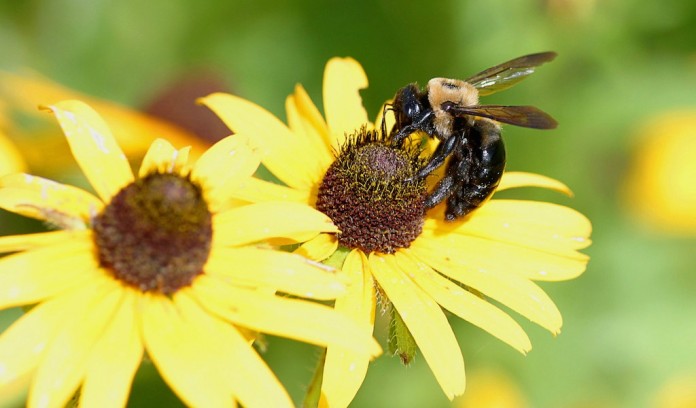There are about 500 species of native bees in Ohio that pollinate crops and native plants, but pollinator numbers have been declining.
You can do your part to encourage the growth of the native bee population by including certain trees, shrubs, annuals, perennials and herbs in your garden and landscape designs this year. Planting native plants allows for pollinators to have access to the nectar and pollen in amounts that they need.
Plants that attract native bees
Planting certain trees, shrubs, annuals, perennials and herbs can help draw beneficial bees to your yard and garden. There are numerous plants that provide bees with nectar.
Ohio State University Extension, Ohio State University Bee Lab and University of Maine Cooperative Extension recommend the following:
Related:
How to build a bee box for native pollinators
Who wants to be a beekeeper? Plan spring hives now – Nov. 14, 2014
Trees:
- Basswood
- Black locust
- Catalpa
- Cherries
- Crabapples
- Dogwood
- Hawthorn
- Lindens
- Native honeysuckle
- Maples
- Plums
- Redbud
- Serviceberry
- Shadbush
- Sourberry
- Willow
Shrubs:
- Blueberry
- Dogwood
- Elderberry
- Fothergilla
- New Jersey Tea
- Ninebark
- Pussy willow
- Rose
- Rosebay rhododendron
- Spirea
- Sumac
- Summersweet clethra
- Viburnum
- Virginia sweetspire
- Willow
Perennials:
- Aster
- Bugloss
- Crocus
- Hyssop
- Lungwort
- Milkweed
- Phlox
- Purple coneflower
- Viola
Annuals:
- Blanketflower
- Cosmos
- Marigold
- Single-flower marigold
- Snapdragon
- Sunflower
- Tickseed
- Zinnia
Herbs:
- Basil
- Borage
- Catmint
- Catnip
- Dill
- Fennel
- Lavender
- Oregano
Note: These lists are not exhaustive. Make sure that the plants you choose are hardy for your growing zone.
Planting tips
According to the Ohio State University Bee Lab, bees are attracted to yellow, blue, purple, violet and white flowers that are aromatic. Bees will visit flowers that they can easily get pollen from, as well as flowers that have a lot of pollen.
The Bee Lab recommends planting at least three varieties in each season (spring, summer and fall). That way, there’s a continuous bloom for bees.
University of Maine Cooperative Extension also recommends giving bees a source of water, such as a birdbath. Regularly change the water, and consider adding some sort of landing platform for bees in the water. Bees also need cover. Some bees are ground-nesting, so leave patches of bare ground. Others are cavity-nesters and seek dead trees.












Thanks for this, Katie!
IT “B” VERY GOOD!
Thanks for reading!
Katie, great info! I learned so much that I will use in planning my garden this season. Thank you!